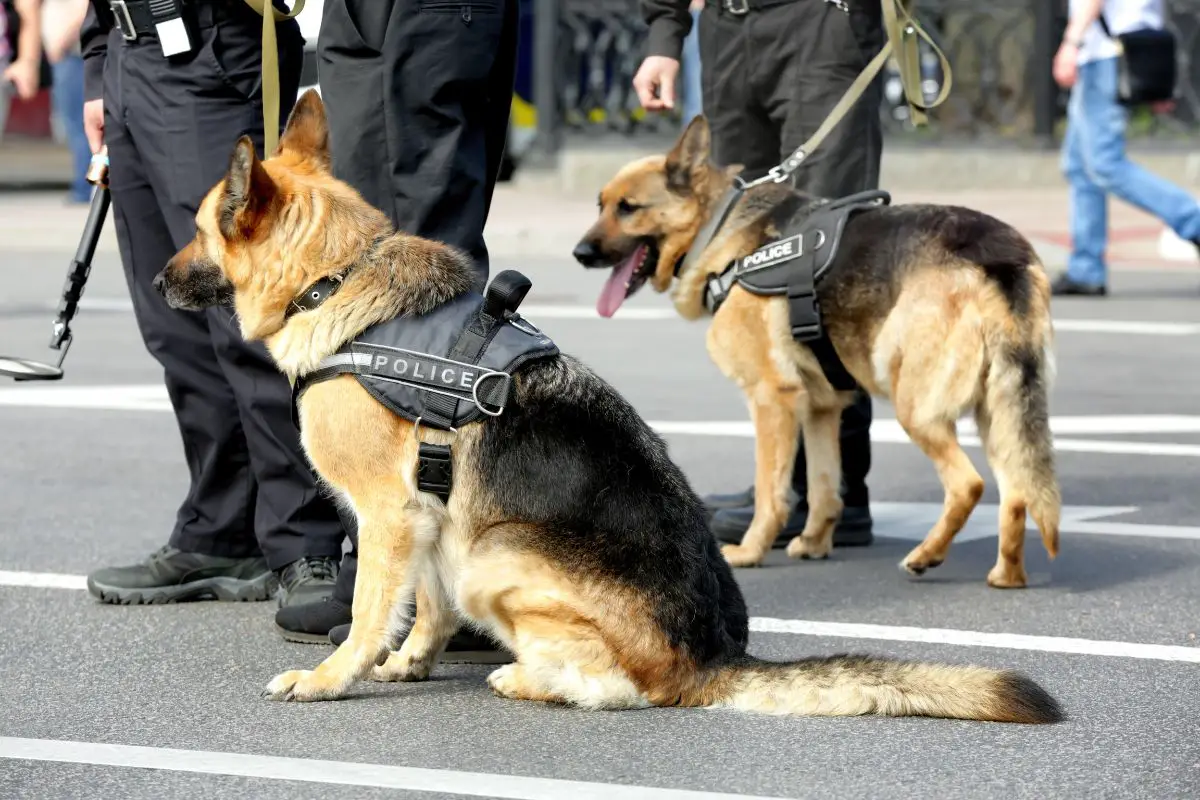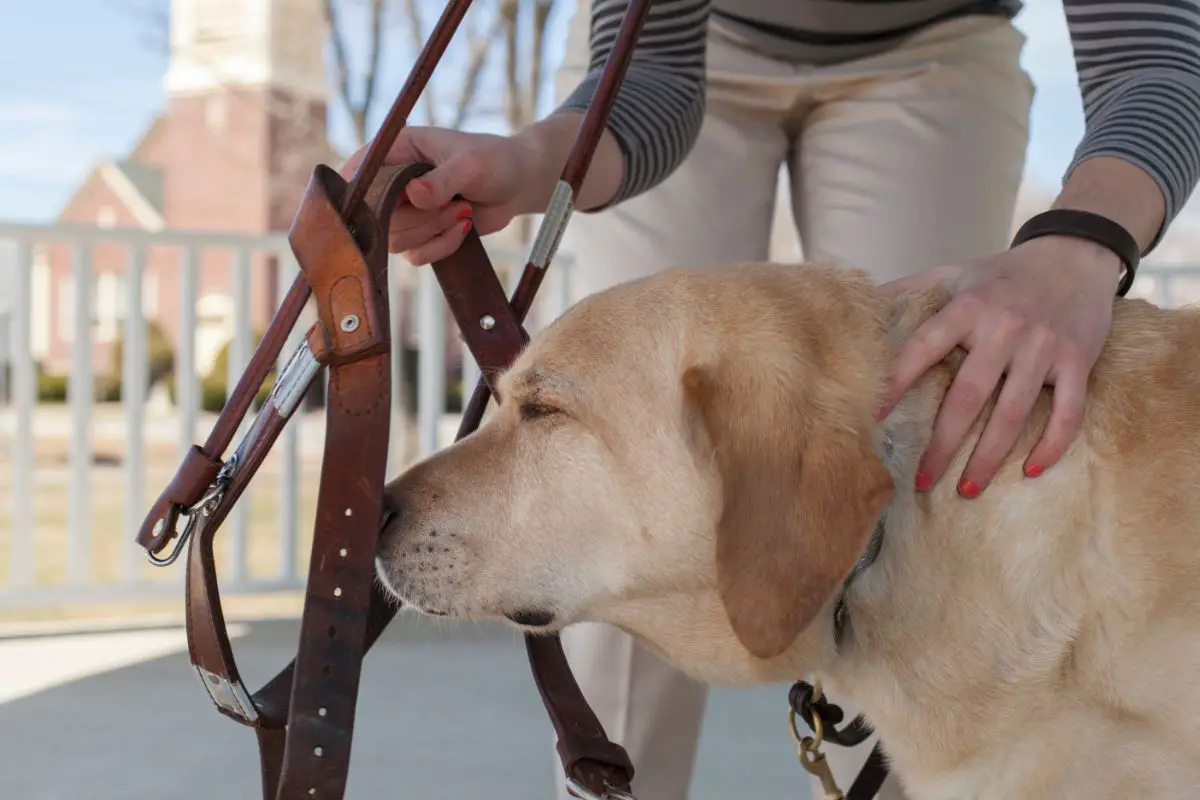When we think of service animals, our first thought goes to dogs, and for good reason too.

The majority of service animals are dogs due to their reliability and the fact that they are easy to train – but what about cats?
A service animal is one that has been expertly trained to live with people who suffer with disabilities, helping them to alleviate some of the things they have to deal with on a day-to-day basis.
But they are also trained to act quickly if their owner comes into trouble, such as by fainting or falling.
So, whilst we know that cats do have health benefits for owners, can they be service animals?
Let’s take a look!
Can A Cat Be A Service Animal?
It has been known for cats to be trained to alert other people and medical staff of an emergency when their owner faints or falls, but legally, they are not recognized as a service animal.
In fact, the ADA (Americans with Disabilities Act) explains that a service animal is a dog who has been trained to both work and do tasks for those who suffer with a disability.
The reason for it being a dog is the ease of training. They work in many different sectors because of their individual skills.
Also, a service dog may accompany their owner into places that don’t normally allow animals.
The majority of people do not walk their cats, so it is only natural that a dog will assist their owner in a grocery store or coffee shop, for example.
What Is A Service Animal?
As we stated above, a service animal is one that has been trained to help a person with a disability to assist them in their day-to-day life, as well as if there is a medical emergency.
They can work for their owner in a number of ways, from being the person’s eyes and ears, helping them to take medication and perform daily tasks, to contacting emergency services if their owner has a seizure.
They are also allowed to enter most buildings, even those that do not usually allow animals, making them very unique.
According to the ADA, only dogs (and in rarer cases miniature horses) are considered as service animals.
Cats are not recognized as a service animal, but not only do some cat owners train their beloved pets to help them, they can also benefit in other ways.
So, What Can Cats Help With?
Cats are, however, recognized as emotional support animals. Because of this, the Fair Housing Act (under the U.S. Department of Housing and Urban Development or HUD) protects these types of cats.
For this reason, it means they are allowed to live in accommodation that does not allow pets, for example an apartment where the landlord doesn’t allow for any pets.
However, despite this, since 2020, cats are not allowed on airplanes as an emotional support animal.
Due to this, if you do want to fly with your cat, you will need to have them be put in a pet carrier instead.
What Is An Emotional Support Animal?

There have been studies to show that having an emotional support cat can do wonders for a person’s health, especially their mental health. In fact, having a cat has shown to reduce both blood pressure and stress.
Also, they can help to decrease the feelings of loneliness, depression, and help to reduce anxiety.
It is also said that cats might even be able to help those who suffer from PTSD, though more evidence is needed.
With all this in mind, it is no wonder then that cats can really help with mental health, and have become great emotional support animals.
However, if you cannot own a cat, then there is also evidence that watching cat videos on YouTube can have a similar effect. So, if you are feeling down today, why not give it a go?
How To Obtain An Emotional Support Cat?
Whilst a service animal needs extensive training, an emotional support animal does not.
Their affection and need for them to be around is enough. They are not going to be trained to call the emergency services or to fetch your morning newspaper.
To qualify your cat as an emotional support animal (ESA), you would need to be seeing a therapist for your issue.
They would then have to write a letter to prescribe why the animal is needed for emotional support.
Whilst a cat is a common ESA, it can also be your dog, or another type of pet, though it has to be deemed appropriate by your therapist.
There is a low chance a hamster, for example, would qualify. They are only awake during the night hours!
Is An Emotional Support Animal The Same As A Therapy Animal?
It can start to become a little confusing, but they are both not the same.
Whilst an emotional support animal lives with you, and it is normally your pet, a therapy animal is something entirely different.
Whilst they both have the same benefit – to help with mental health and emotions – a therapy animal visits places to spend time with people. This can be a school, a hospital, or even a nursing home.
These animals have to be trained and receive a certificate to show that they are suitable to be a therapy animal.
They also normally belong to a person who volunteers, however, they do not receive special access to areas where animals are not allowed.
Final Thoughts
Whilst cats have been known to be trained to assist in the duties of a service animal, they are often overlooked due to the fact that dogs are normally the ones who are trained in such duties.
Instead, cats are usually seen as emotional support animals (ESA).
This role provides numerous benefits to their owner, from reducing stress and anxiety, as well as helping with mental health issues.
So yes, cats can be a service animal, but they are not currently recognized legally as one, as they are few and far between.
- Are Antlers Safe For Dogs? - January 14, 2024
- Can Dogs Eat Honey Nut Cheerios? - December 23, 2023
- Natural Deworming Remedies for Your Dog - December 18, 2023









